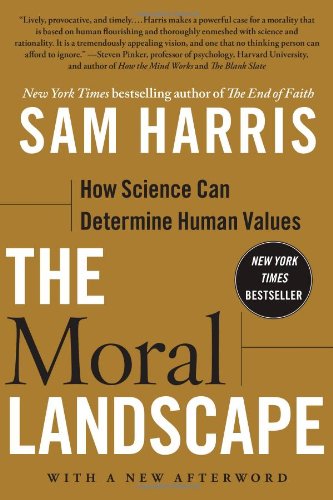 |
The Moral Landscape How Science Can Determine Human Values
Sam Harris
Free Press, 2010
ISBN: 978-1-4391-7122-6 |
If you are not familiar with Sam Harris, I should preface this brief review by stating that he is one of the so called "Four Horsemen of Atheism" (I will let you figure out who the other three are). He is quite assertive and to some comes across as condescending. To boot, he has heavily critiqued the Abrahamic religions, which to many is taboo. I point this out initially as some readers might find Sam too much to bear, and so to them I would recommend that they simply move on. For those who are intrigued, this book will provide a thoughtful and candid analysis on how morality can and should be approached by science as moral values ultimately arise from the activity of the complex network of cells we call the human brain. Before going any further, and in the interest of full disclosure, I should let the reader know that I intermittently interacted with Sam between late 2000 and early 2002 as we coincided in most of the graduate courses required for both of us to earn our PhD's in neuroscience at UCLA. I should point out that I always found him to be convivial and outgoing, but clearly more mature than the rest of us at the time. He was somewhat older and as such had a much clearer view of where he was going with his graduate studies. Nevertheless I hope my opinion of his book is objective and unbiased.
The central thesis of this book is that religion is not necessary to generate or guide the moral values that underpin the human experience. Sam argues that morality is the end product of humans wanting to improve their experience on earth (in essence increasing their wellbeing) and that this can be understood by studying the brain. The "moral landscape" is an imaginary three dimensional space with a series of peaks representing high wellbeing and valleys representing low wellbeing. Humans can then be seen as navigating this space in an effort to find one of those peaks (and avoid all the surrounding valleys) so as to improve their existence. His arguments are always well reasoned and thoroughly researched, so it is hard to disagree with his premise. That said, at times I couldn't help but feel that Sam was being culturally naïve. Although few would argue that certain actions (for example torturing children) are reprehensible and immoral under any and all circumstances, it is less clear where to draw the line with things like wearing a hijab. It is arguable that forcing a woman to wear one is immoral while letting her choose to wear one then it not. Sam however appears to have very clear boundaries between the moral peaks and valleys and is quite inflexible on some scenarios that will seem "fuzzier" to many. Indeed, for those of us who have lived in other countries we realize that those moral boundaries can shift subtly in ways that are culturally relevant. I fear that although the concept of the "moral landscape" is clever, there won't be a universal frame of reference. Rather, different cultures will have a particular reference where those peaks and valleys are slightly shifted with respect to Sam's "master" landscape. I fear that Sam will call me a moral relativist, but I would counter argue that I am not stating that there are an infinite number landscapes, but rather one general landscape where the peaks are fuzzy and slightly out of focus.
